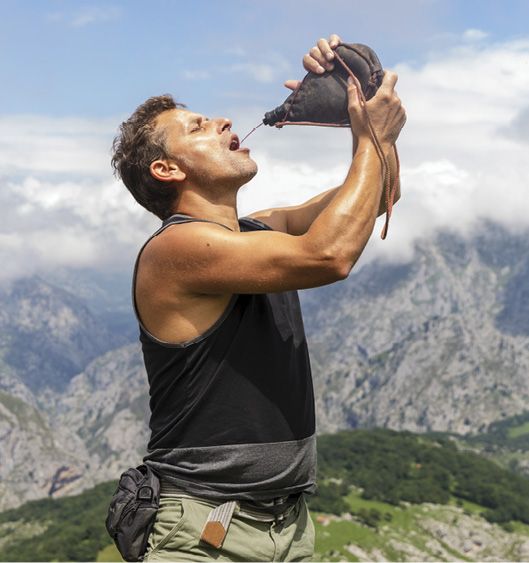
SKIING HISTORY
Editor Kathleen James
Art Director Edna Baker
Contributing Editor Greg Ditrinco
ISHA Website Editor Seth Masia
Editorial Board
Seth Masia, Chairman
John Allen, Andy Bigford, John Caldwell, Jeremy Davis, Kirby Gilbert, Paul Hooge, Jeff Leich, Bob Soden, Ingrid Wicken
Founding Editors
Morten Lund, Glenn Parkinson
To preserve skiing history and to increase awareness of the sport’s heritage
ISHA Founder
Mason Beekley, 1927–2001
ISHA Board of Directors
John Fry (1930-2020), Chairman
Seth Masia, President
Wini Jones, Vice President
Jeff Blumenfeld, Vice President
John McMurtry, Vice President
Chan Morgan, Treasurer
Einar Sunde, Secretary
Richard Allen, Skip Beitzel, Michael Calderone, Christin Cooper, Art Currier, Dick Cutler, Chris Diamond, David Ingemie, Joe Jay Jalbert, Rick Moulton, Wilbur Rice, Charles Sanders, Bob Soden (Canada)
Presidential Circle
Christin Cooper, Billy Kidd, Jean-Claude Killy, Bode Miller, Doug Pfeiffer, Penny Pitou, Nancy Greene Raine
Business & Events Manager
Kathe Dillmann
P.O. Box 1064
Manchester Center VT 05255
(802) 362-1667
kathe@skiinghistory.org
Membership Services
Laurie Glover
(802) 375-1105
laurie@skiinghistory.org
Corporate Sponsorships
Peter Kirkpatrick
(541) 944-3095
peterk10950@gmail.com
Bimonthly journal and official publication of the International Skiing History Association (ISHA)
Partners: U.S. Ski and Snowboard Hall of Fame | Canadian Ski Museum and Hall of Fame
Alf Engen Ski Museum | North American Snowsports Journalists Association | Swiss Academic Ski Club
Skiing History (USPS No. 16-201, ISSN: 23293659) is published bimonthly by the International Skiing History Association, P.O. Box 1064, Manchester Center, VT 05255.
Periodicals postage paid at Manchester Center, VT and at additional mailing offices. Postmaster: Send address changes to ISHA, P.O. Box 1064, Manchester Center, VT 05255
ISHA is a 501(c)(3) public charity. EIN: 06-1347398
Written permission from the editor is required to reproduce, in any manner, the contents of Skiing History, either in full or in part.
How’s Your Aim?
Bota bags could be having a moment. These holdovers from skiing’s golden age laugh at today’s need for social distancing.
What will skiing, riding and cross-county look like in 2020-2021? Will gondolas be fully loaded? Will six-seat chairs be limited to a maximum of only two to three people from the same family? No one knows for certain, and policies vary between resorts. But one thing is sure: In a time of social distancing, skiers will be reluctant to pass around that pocket flask of
Jägermeister to ward off the chill.
The time is right to bring back the bota bag.
 Martini trees were a legendary and beloved feature of Taos Ski Valley dating back to the mid-1950s. What could be more memorable than coming across a hidden glass porrón buried in a tree well containing a perfectly-chilled gin martini?
Martini trees were a legendary and beloved feature of Taos Ski Valley dating back to the mid-1950s. What could be more memorable than coming across a hidden glass porrón buried in a tree well containing a perfectly-chilled gin martini?
Better yet, what if you could carry a martini around all day? And instead of breakable glass, carry it in a bota bag—a wineskin sling pouch traditionally made of leather, which presumably imparted some retsina-like flavor to the wine. Modern versions with plastic liners could carry martinis, wine or some other bracing refreshment that could be consumed while skiing or riding. What’s more, you could share some liquid courage with your friends and loved ones from a safe social distance of six feet—or farther—depending upon your aim.

The forerunner of the bota bag was the waterskin dating back some 5,000 years. Normally made of sheep or goat skin, it retained water naturally, perfect for desert crossings until the invention of the canteen. The first images of these bladders are from ancient Assyrians, who used them as floats in approximately 3000 B.C.
Botas have an especially long history in Spain. Traditional models were made from leather and lined with goat bladders, often suspended by a red braided shoulder strap. Tree sap was used to prevent liquids from seeping through. Its modern iteration has a handy cap that contains a nozzle with its own stopper to dispense the liquid, usually wine, sometimes peppermint schnapps, or any preferred adult beverage. (Botas have been known to be filled with Mateus, then after the bottle is emptied, it can be turned into a fine candle holder suitable for a college dorm room.)
Technique was—and remains—critically important when employing a bota, especially to the Basques, who called it a zahato. No less a drinking authority than Ernest Hemingway explains in the 1926 novel The Sun Also Rises: “He was a young fellow and he held the wine bottle at full arms’ length and raised it high up, squeezing the leather bag with his hand so the stream of wine hissed into his mouth. He held the bag out there, the wine making a flat, hard trajectory into his mouth, and he kept on swallowing smoothly and regularly.” Enough said.
Today, thanks to the internet, there are bota tutorials. Greg Morrill’s blog Retro-skiing.com explains, “First hold the spout with one hand and support the bag with the other hand. Now tip your head back with your mouth open, lift the bota toward your mouth, and squeeze the bag to squirt the wine into your mouth.” Morrill continues, “The mark of an expert bota-user was that once he or she started drinking, the bota would be moved to arms-length while still drinking! Just remember you’ll have to increase the pressure as you move the bota.”
There was a time during the bota’s heyday in the mid- to late-20th century when it was common to see skiers enthusiastically swigging from these soft canteens on a lift, or while a group of friends partied mid-mountain, skis stuck in the snow to form backrests. Often when snow surrounded the nozzle, you could swill icy cold wine slush into your mouth.
Few ski products bring back such a flood of warm memories, or in one case, a rush of adrenaline. My cousin Alan Blumenfeld, 74, from Voorhees, New Jersey, remembers serving on ski patrol at the Big Vanilla at Davos ski area north of New York, and watching from a distance as a hapless skier took an egg-beater fall off a small mogul.
He almost made it until a ski tip caught an edge. “When I skied down to the point of his decimation, the entire area surrounding him was a vibrant red! My heart started racing. I marked off the area quickly and immediately started to check him for what might have been extreme bleeding,” Blumenfeld recalls. “Much to my relief I found that he was fine; the bota bag that was hanging off his neck had exploded during the fall. He was soaked in Chianti. It could have been a scene from The Texas Chainsaw Massacre.” In the end, all was well. “The skier had a few bruises,” Blumenfeld says. “But the bota was terminal, and never recovered.”
There was something slightly illicit about the appeal of bota bags. Brian Fairbank, 74, chairman of Fairbank Group based at Jiminy Peak Mountain Resort in western Massachusetts, recalls, “the only time I used one was when I was under drinking age and an older buddy got some red wine to put in it. I can remember hiding it under my parka and skiing off trail to take a swig.”
A full 16 years old at the time, “I remember thinking how cool it was to drink without getting caught—until I got sick. My stomach and head were killing me,” Fairbank remembers. “That was it for me and bota bags.”
Cindy Suh, 50, of Bricktown, New Jersey, learned later in life that her father had an ulterior motive when breaking out the bota bag. “I always thought it was so cool that my dad would let me drink from it when we were on the ski lift. Years later he told me that prior to that I would just cry all the way up the mountain, saying it was too cold to keep skiing. The wine kept me from crying and shivering.”
The martini trees can still be found at Taos, although in this litigious age, they’re tightly monitored, hung from trees in handcarved wooden lockboxes. Meanwhile, bota bags continue to be sold — in both traditional old-school versions and modern styles that use neoprene to encase one-liter sports bottles made of HDPE-recyclable, BPA-free plastic to handle liquids hot or cold. Have times changed.
Could botas, however, once again be ready for prime time? Perhaps in an era of pandemic-induced social distancing, swigging from a shared bottle of Jager will give way to tossing around a bota bag like some colorful Hemingway character … and then simply taking aim. 
ISHA vice president Jeff Blumenfeld, a resident of Boulder,
Colorado, is the president of the North American Snowsports Journalists Association (NASJA.org). He is author of Travel with Purpose: A Field Guide to Voluntourism (travelwithpurposebook.com.)


.
Table of Contents

Corporate Sponsors
ISHA deeply appreciates your generous support!
WORLD CHAMPIONSHIP ($3,000 AND UP)
Gorsuch
Polartec
WORLD CUP ($1,000)
Aspen Skiing Company
BEWI Productions
Bogner
Boyne Resorts
Dale of Norway
Darn Tough Vermont
Dynastar | Lange | Look
Fairbank Group: Bromley, Cranmore, Jiminy Peak
Gordini USA Inc. | Kombi LTD
HEAD Wintersports
Hickory & Tweed Ski Shop
Intuition Sports, Inc.
Mammoth Mountain
Marker-Volkl USA
National Ski Areas Association (NSAA)
Outdoor Retailer
Rossignol
Ski Area Management
Ski Country Sports
Snowsports Merchandising Corporation
Sport Obermeyer
Sports Specialists, Ltd.
Sun Valley Resort
Vintage Ski World
Warren and Laurie Miller
World Cup Supply, Inc.
GOLD ($700)
Race Place | BEAST Tuning Tools
The Ski Company (Rochester, NY)
Thule
SILVER ($500)
Alta Ski Area
Boden Architecture PLLC
Dalbello Sports
Ecosign Mountain Resort Planners
Fera International
Holiday Valley
Hotronic USA, Inc. | Wintersteiger
MasterFit Enterprises
McWhorter Driscoll, LLC
Metropolitan New York Ski Council
New Jersey Ski & Snowboard Council
NILS, Inc.
Russell Mace Vacation Homes
Schoeller Textile USA
Scott Sports
Seirus Innovations
SeniorsSkiing.com
Ski Utah
Swiss Academic Ski Club
Tecnica Group USA
Trapp Family Lodge
Western Winter Sports Reps Association
World Pro Ski Tour


